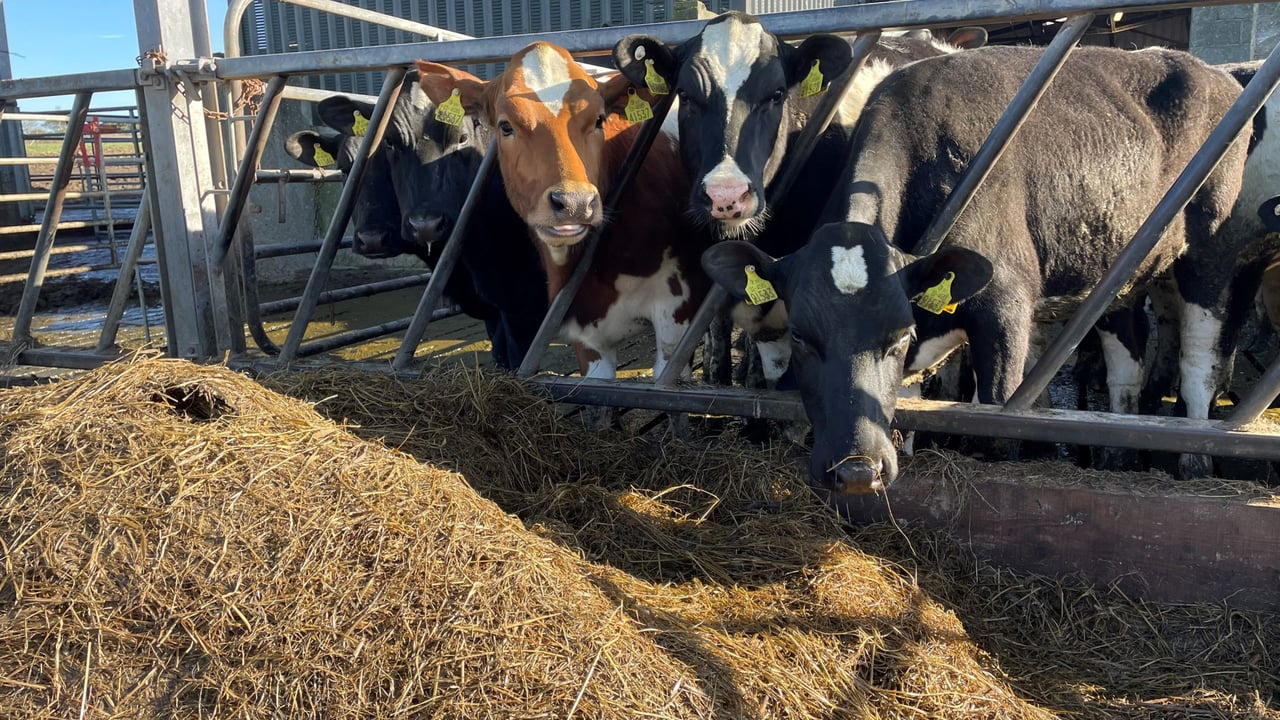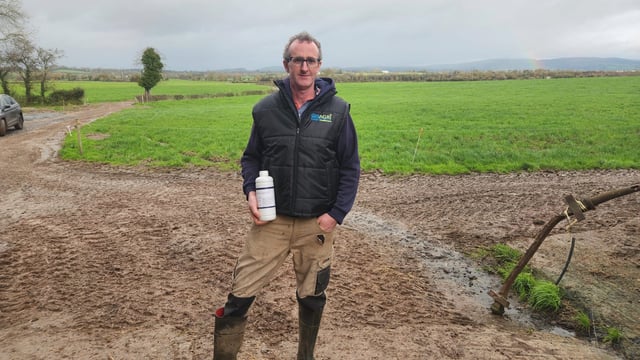Achieving target weights for spring-calving heifers
As we approach the winter housing period, farmers must make spring-calving heifers a priority in an effort to achieve the correct target weights.
It is critical for first-time calvers to be at the correct body condition score (BCS) when calving down to ensure optimum production and fertility, making winter diets key to success of the farm's future.
Heifer rearing has being ranked as the second most expensive factor within a dairy system by Animal Health Ireland (AHI).
However, with the good weather over the last couple of weeks, a lot of farmers have being able to extend the grazing season, saving money on fodder and concentrates.
When you do eventually bring your in-calf heifers in for housing, it is recommended to weigh them to to see if they are on target, and if not, calculate what changes need to be made to their diet.
Heifers should be calving down at 90% of their mature bodyweight in the spring, therefore in-calf Friesian heifers should be weighing around 550kg at calving while in-calf Jersey heifers should be around 500kg at calving
| Age | Percentage of mature cow body weight |
|---|---|
| 6 months | 30% |
| 15 months | 60% |
| 24 months | 90% |
Heifers that were born in early February to March 2024 should now be around 18/19 months-old and weigh approximately 75-80% of their mature body weight.
The mature weight of a cow with the following maintenance sub-index should be as follows:
| Maintenane index EBI (€) | -10 | 0 | 10 | 20 | 30 |
| Mature weight (kg) | 690 | 640 | 590 | 540 | 490 |
A first-time-calving heifer should have a BCS of approximately 2.75. If she is lower than this, her fertility will be affected and if her BCS is higher she could have a difficult calving and produce poor colostrum.
In-calf heifers
Heifers who are not on target and looking likely to calve down below the target of 90% of mature body weight may have problems with performance and fertility, therefore their diet should be adjusted now to include up to 2kg of additional concentrates up until six weeks prior to calving or until the target is met.
It is also advisable to separate any underweight heifers from the herd, ensuring there is no bullying at the feed space and the heifers can comfortably access silage throughout.
Each heifer should have 0.6m of feed space available as well as comfortable cubicle and spacious walkways to let her thrive fully.
These heifers should be closely monitored throughout the winter, in case any set-backs are detected, so that they can be treated quickly without hindering growth and performance drastically.
Heifers that are on target should be fed ad-lib good quality silage over the winter, which is usually sufficient for the diet.
Remember when planning fodder budgets that each in-calf heifer will eat approximately 1.1t of DM silage per month.
Training
Not only is winter used to achieve the correct target weights for heifers; many farmers also use this period to train heifers in the parlour.
With the hustle and bustle of the parlour in the spring, as well as the daunting experience of the first pregnancy, heifers can be very stressed when they begin milking.
Considering cows are a creature of habit, it can be a good idea to bring the heifers through the parlour once a day, especially if they are being supplemented with concentrates as they will soon figure out that is where they get food.
This will help towards creating a calmer cow in the spring, which in turn can lead to greater milk production.
As well as that, bringing heifers through the parlour allows the farmers to check the animals out, assessing their BCS and identifying any abnormalities or infections, which can then be treated promptly.





